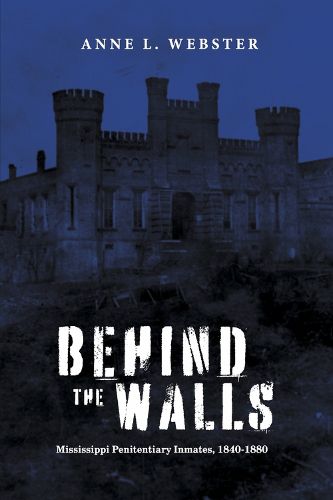Readings Newsletter
Become a Readings Member to make your shopping experience even easier.
Sign in or sign up for free!
You’re not far away from qualifying for FREE standard shipping within Australia
You’ve qualified for FREE standard shipping within Australia
The cart is loading…






The first Mississippi state prison opened its doors in 1840. Behind the Walls is a first attempt to identify the inmates of the first forty years. The Superintendent of the penitentiary was required to provide the governor with an official report regarding the inmates and the condition of the prison itself. The required information varied over the years, but the critical information of name, age, crime, and county where the inmate was sentenced was usually included. While the race of the individual was not given, his or her physical description was provided. For the first twenty years, 1840-1860, the prison population was primarily Caucasian, with a few free black noted. If slaves were involved in a crime, there were rarely admitted to prison, their punishment, if any, would be delivered by their owner. As valuable property, thy were a commodity too precious to be nonproductive in the fields. After the Civil War, the prison population shifted and the majority population for 1860-1880 was African American. Sources for African American names in the reconstruction period are rare so this should prove a welcome resource. The descriptive terms ranged from fair, dark, and brown to copper colored and later, to black and white. Could the many described as copper colored actually be Native American? This question should be pursued as many were sentenced from counties with large Native American residents. Additionally, the cases where the defendants were teenagers or pre-teens should also the attention of students of criminal justice. What could have caused an eleven year old to be sentenced to the state penitentiary? If an inmate's escape was found in newspaper accounts, frequently more information about his/her case was provided, such as, the name of the victim, or extenuating circumstances related to the crime. While written with the genealogists in mind, it is obvious that Behind the Walls should appeal to many genres.
$9.00 standard shipping within Australia
FREE standard shipping within Australia for orders over $100.00
Express & International shipping calculated at checkout
The first Mississippi state prison opened its doors in 1840. Behind the Walls is a first attempt to identify the inmates of the first forty years. The Superintendent of the penitentiary was required to provide the governor with an official report regarding the inmates and the condition of the prison itself. The required information varied over the years, but the critical information of name, age, crime, and county where the inmate was sentenced was usually included. While the race of the individual was not given, his or her physical description was provided. For the first twenty years, 1840-1860, the prison population was primarily Caucasian, with a few free black noted. If slaves were involved in a crime, there were rarely admitted to prison, their punishment, if any, would be delivered by their owner. As valuable property, thy were a commodity too precious to be nonproductive in the fields. After the Civil War, the prison population shifted and the majority population for 1860-1880 was African American. Sources for African American names in the reconstruction period are rare so this should prove a welcome resource. The descriptive terms ranged from fair, dark, and brown to copper colored and later, to black and white. Could the many described as copper colored actually be Native American? This question should be pursued as many were sentenced from counties with large Native American residents. Additionally, the cases where the defendants were teenagers or pre-teens should also the attention of students of criminal justice. What could have caused an eleven year old to be sentenced to the state penitentiary? If an inmate's escape was found in newspaper accounts, frequently more information about his/her case was provided, such as, the name of the victim, or extenuating circumstances related to the crime. While written with the genealogists in mind, it is obvious that Behind the Walls should appeal to many genres.